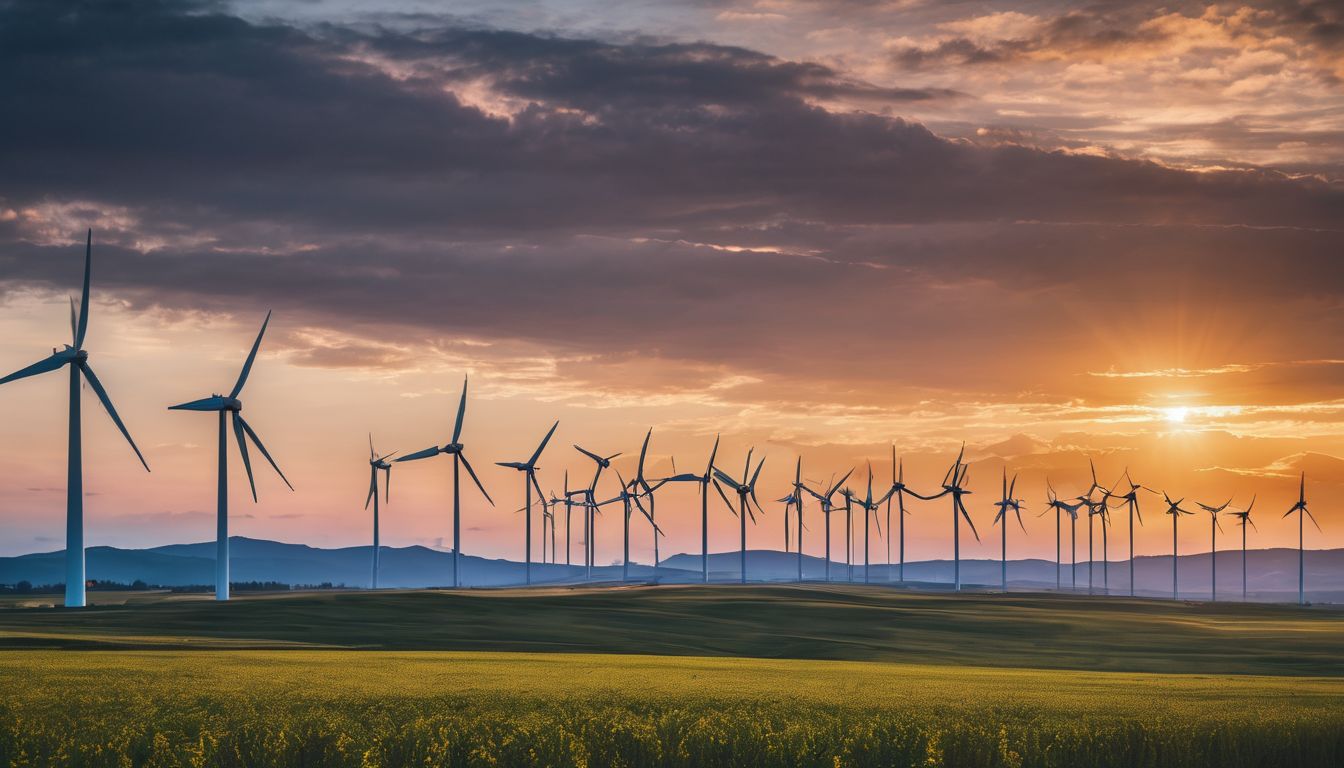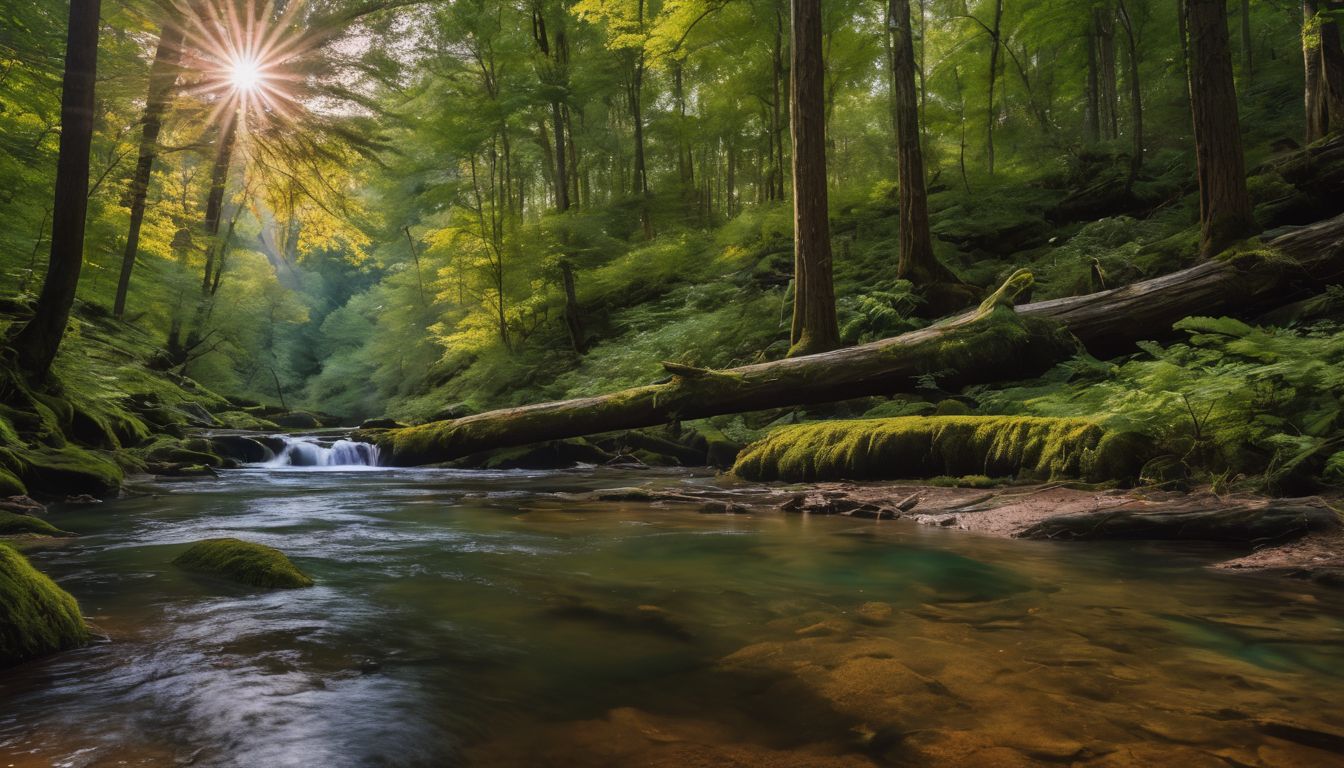In the whirlwind of our daily lives, it’s all too easy to miss the subtle enchantments of local fauna. We share your sentiment – watching habitats diminish before our eyes has ignited a desire within us to make a difference.
This guide is replete with insights and practical information designed to ignite a fervour for nature within your neighbourhood, by guiding you through the process of setting up your very own Wildlife Watch Group.
So why not join us as we embark on this journey together? Let’s rekindle our connection with the natural world around us.
Key Takeaways
- Starting a local Wildlife Watch Group involves organising activities for children to learn about local wildlife, engaging community volunteers, and securing support from conservation agencies.
- To successfully launch the group, focus on recruiting enthusiastic volunteers, partner with educational institutions and local organisations, and address safety and insurance matters.
- Members of a Wildlife Watch Group gain practical knowledge of ecosystem preservation through direct participation in habitat protection efforts and wildlife monitoring initiatives.
- Community involvement is key to the success of a Wildlife Watch group; it encourages collective environmental responsibility and informs future conservation strategies.
- Participation in these groups offers opportunities for personal growth while making meaningful contributions to protecting local biodiversity.
What is Wildlife Watch?
Wildlife Watch is a program that offers activities and opportunities for children to discover local wildlife, involving local communities and volunteers. It also provides resources and support from conservation agencies.
Starting a Local Wildlife Watch Group can bring together like-minded individuals to make a positive difference in the community’s environmental wellbeing.
Activities and opportunities for children to discover local wildlife
We organise exciting excursions into nearby nature reserves, where kids get up close with the beauty of local animals and plants. They’ll learn to track creatures using wildlife worksheets, which help sharpen observation skills.
Our group leaders create engaging treasure hunts that incorporate a wildlife checklist, turning each outing into an adventurous quest.
Children also have the chance to participate in bird box building workshops and butterfly counts, fostering a hands-on understanding of ecology right in our neighbourhoods. We encourage young minds to embrace outdoor fun through guided walks that teach them about species protection and habitat preservation, laying the groundwork for lifelong environmental stewardship.
Involvement of local communities and volunteers
Engaging local communities and volunteers is essential to the success of a Wildlife Watch group. By collaborating with local schools, community centres, and conservation agencies, we can mobilise individuals who are passionate about wildlife conservation.
Organising training sessions for volunteers ensures that they are equipped with the necessary skills and knowledge to lead wildlife activities and monitoring initiatives effectively.
Partnering with local organisations not only broadens our reach but also strengthens community engagement in biodiversity monitoring and habitat protection efforts. Moreover, involving volunteers fosters a sense of ownership over local wildlife preservation, creating a ripple effect of ecological awareness within the community.
Volunteers play a vital role in supporting our nature education programmes and citizen science projects, encouraging active participation in animal advocacy and ecological stewardship.
Resources and support from conservation agencies
Once our local wildlife watch group is up and running, we can tap into valuable resources and support from conservation agencies. These organisations offer a wealth of knowledge, expertise, and guidance on wildlife preservation and habitat protection.
Additionally, partnering with conservation agencies provides access to funding opportunities for community projects and initiatives aimed at safeguarding our local wildlife and natural ecosystems.
By leveraging the resources available from these agencies, we can further enhance the impact of our efforts in nurturing a thriving environment for both flora and fauna.
Conservation agencies also provide valuable training programmes for volunteers who are passionate about wildlife preservation. Through their expertise in nuisance wildlife management, nature preservation, and habitat restoration, they equip volunteers with practical skills to effectively contribute to conservation activities within our communities.
How to Start a Local Wildlife Watch Group
To start a local wildlife watch group, we need to focus on recruiting, training, and providing leadership for volunteers. Partnering with local organisations and schools can also help in creating a strong foundation for the group.
Safety and insurance considerations are important elements to consider as well.
Recruitment, training, and leadership of volunteers
Recruiting, training, and leading volunteers is crucial for the success of a local wildlife watch group. Here’s how we can do it:
- Identify potential volunteers with a passion for wildlife and conservation.
- Provide comprehensive training on local flora, fauna, and monitoring techniques.
- Assign leadership roles based on individuals’ skills and commitment levels.
- Cultivate a sense of teamwork and camaraderie among the volunteers.
- Regularly update and refresh training to keep volunteers engaged and informed.
- Empower volunteers to take ownership of specific tasks and projects within the group.
Partnering with local organizations and schools
- Collaborate with schools to organise wildlife-themed educational events, such as nature walks and interactive workshops, to engage students in hands-on learning about local wildlife.
- Seek opportunities to work with local environmental or conservation organisations to access additional resources and funding for wildlife monitoring initiatives and habitat preservation projects.
- Establish partnerships with community groups to coordinate joint wildlife observation activities, creating a network for sharing knowledge and experiences.
- Engage local businesses in sponsoring or supporting Wildlife Watch activities through donations or promotional events, fostering community involvement in conservation efforts.
- Explore the possibility of integrating Wildlife Watch programmes into existing community events or festivals, raising awareness about local wildlife conservation and environmental stewardship.
Safety and insurance considerations
When starting a local Wildlife Watch group, it’s essential to address safety and insurance considerations. Here are some important factors to consider:
- Conduct a thorough risk assessment of potential activities to identify any safety hazards related to wildlife observation and participation in outdoor events.
- Obtain liability insurance coverage for the group’s activities to protect volunteers, participants, and the organisation in case of accidents or property damage.
- Ensure that all volunteers and participants receive proper safety training before engaging in any wildlife observation or conservation activities.
- Establish clear guidelines for emergency procedures and communication protocols in case of accidents or incidents during group activities.
- Consider obtaining permits or permissions for accessing certain wildlife habitats or protected areas where the group plans to conduct activities.
Benefits of Joining a Wildlife Watch Group
Embark on a hands-on learning experience about local wildlife, contribute to conservation efforts, and become involved in your community. Read on to discover the many benefits of joining a Wildlife Watch Group.
Hands-on learning about local wildlife
Engaging in hands-on activities, such as wildlife observation and habitat preservation initiatives, provides valuable opportunities to learn about local wildlife. By joining a Wildlife Watch Group, individuals can actively participate in monitoring and learning about the species that inhabit their community.
Not only does this provide direct involvement in conservation efforts, but it also fosters a deeper connection to nature and a sense of responsibility towards environmental stewardship.
Through these experiences, we gain insights into the delicate balance of ecosystems and the significance of preserving natural habitats for future generations. Encouraging children to partake in these activities further ignites their curiosity and instils an early appreciation for wildlife conservation.
Contribution to conservation efforts
Joining a local wildlife watch group gives us the chance to actively contribute to conservation efforts in our community. By participating in hands-on activities and monitoring local wildlife, we directly support wildlife habitat preservation organisations and community wildlife monitoring initiatives.
Our involvement also plays a crucial role in raising awareness about the importance of protecting natural habitats for the benefit of future generations.
As part of our contribution, we help gather valuable data on local wildlife populations, which aids conservation agencies and research institutions in making informed decisions about conservation priorities and strategies.
Opportunities for community involvement
Get involved in local wildlife conservation efforts. You can join our Wildlife Watch group and participate in hands-on activities, events, and citizen science projects that help protect and preserve the natural environment.
By volunteering with us or other local wildlife observation groups, you can make a significant impact on local conservation initiatives.
Connect with like-minded individuals who share your passion for nature and wildlife. Volunteer opportunities include habitat restoration, wildlife monitoring, educational outreach programmes, and community events.
Make a difference by becoming an active member of our local conservation efforts today.
Conclusion
Get involved with starting a local wildlife watch group by reaching out to like-minded community members and organisations. Organise volunteer training sessions, plan nature walks, and engage children through educational activities.
Collaborate with local schools to inspire the next generation of conservationists and make a positive impact on your local environment. Join us in creating a vibrant network dedicated to preserving and appreciating the natural world around us.
FAQs
1. How do I start a local wildlife watch group?
To start a local wildlife watch group, you can connect with nature clubs or the wildlife trust and gather people interested in local wildlife conservation.
2. Can children be involved in wildlife watch groups?
Absolutely! You can encourage kids to join by offering children’s wildlife magazine subscriptions and organising activities suited for young naturalists.
3. What are ways volunteers can contribute to the group?
Volunteers play an essential role, from assisting with events to participating in volunteer training that supports conservation efforts.
4. Why is it important to have a local wildlife watch group?
Having a local group dedicated to watching over our wildlife helps protect natural habitats and educates community members about the importance of preserving biodiversity.





